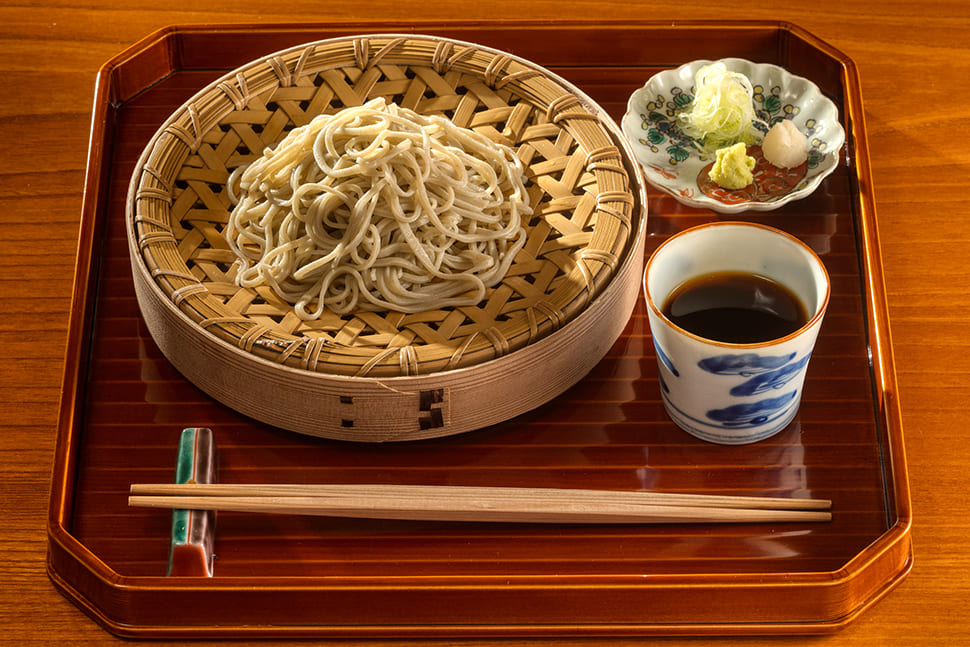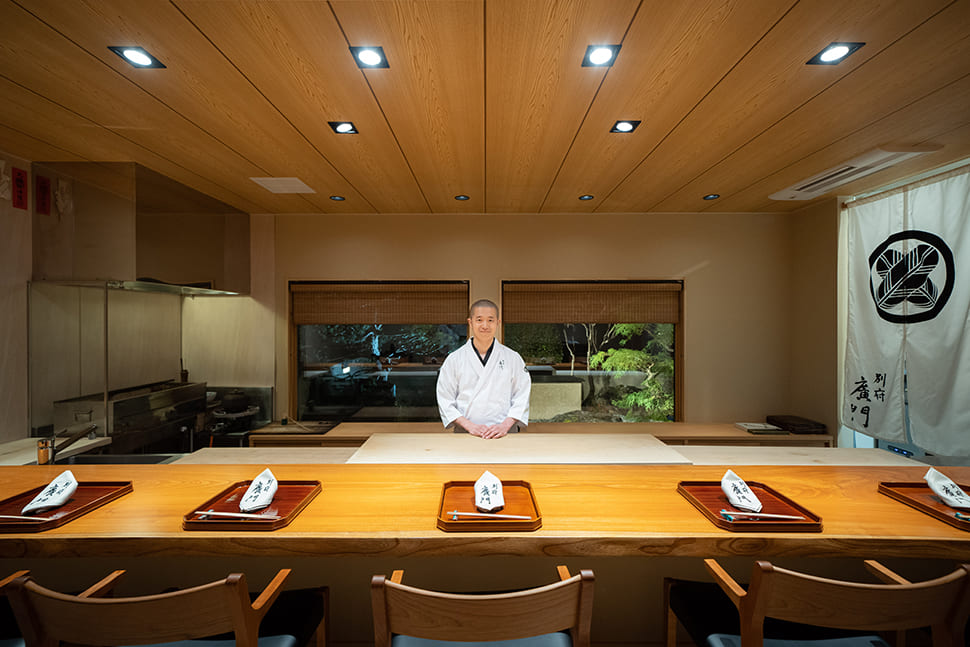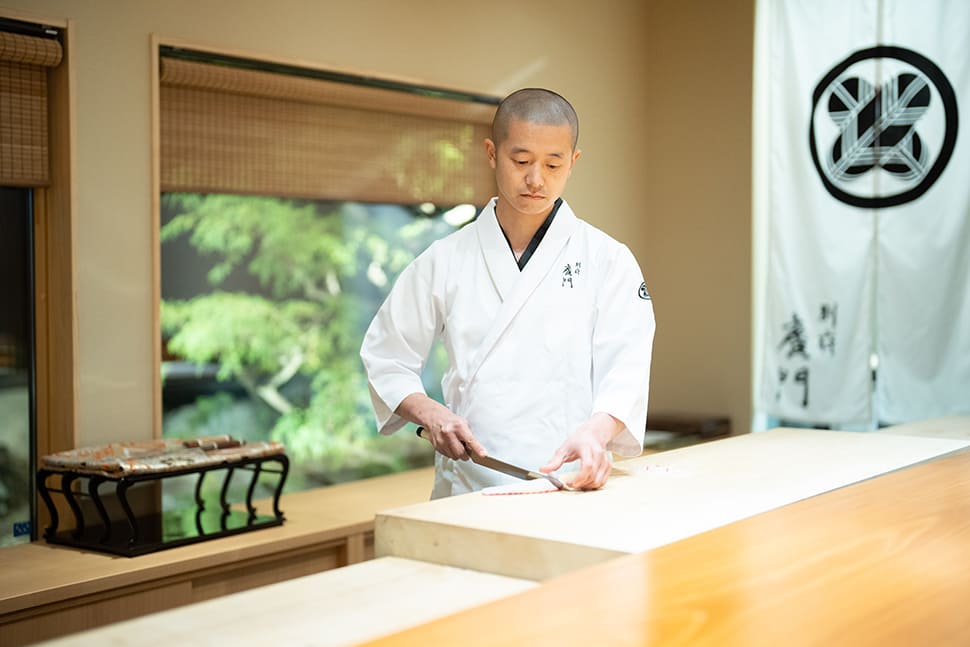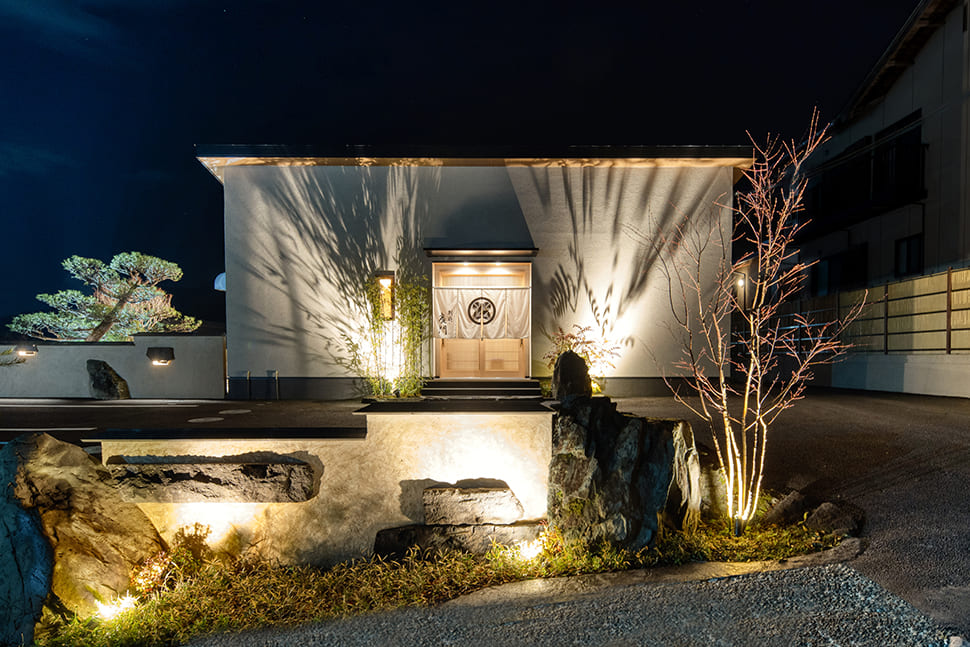DESTINATION RESTAURANTS
May 27, 2025
Beppu Hirokado
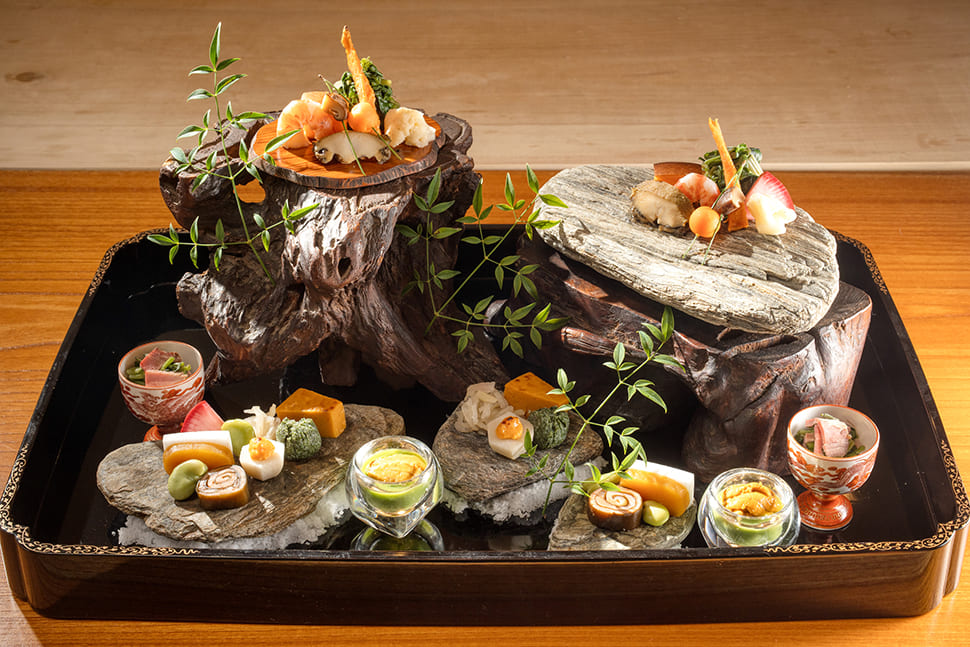
The city of Beppu, in Oita Prefecture, is one of Japan’s foremost hot spring locations. Boasting both Japan’s largest number of hot spring sources (about 2,600) and largest hot spring outflow, Beppu receives 8 million visitors each year. In the area around Beppu Station, it’s exciting just to walk through the bustling streets lined with casual eateries. Thanks to its location on Beppu Bay, the city is also blessed with abundant seafood. Due to these distinctive features, the number of fine-dining restaurants in Beppu is gradually increasing. A prime example is Nihon Ryori Beppu Hirokado, located on a mountainside about 20 minutes by car from the station.
Proprietor Taizo Hirokado was born in Beppu. His father is a chef. After graduating from high school, he absorbed the fundamentals of Japanese cuisine at a traditional restaurant in Osaka. He then spent a year in Hiroshima, training in soba noodle-making at Daruma Sekkasanbo, a restaurant headed by soba master Kunihiro Takahashi. Starting in 2016, he worked in Tokyo for four years as second-in-command at a popular Japanese restaurant. In June 2021, he opened Nihon Ryori Beppu Hirokado.
The restaurant has eight counter seats and serves only an omakase course menu at ¥28,500 ($190), including tax. At the start of the meal, the soon-to-be-prepared fish and other sea animals are first shown to diners while still alive — swimming sea bream, undulating octopuses, jumping shrimp and more.
Hirokado said: “When I decided to set out on my own, I thought about how I could offer cuisine that would be unique to this location. I concluded that the only place where fish just out of the water can be served is the area where it’s sourced. Recently, aging fish has been popular as a cooking method, but I use fish taken from the market to the restaurant while still in seawater, in a living state.”
Fish starts to turn tough almost as soon as it is cleaned and filleted. For that reason, fish prepared as sashimi is sliced so thin that the pattern on the serving plate can be seen through the slices. The restaurant’s fish has a firm, chewy texture and a flavor with sweetness and vitality owing to its exceptional freshness. As Hirokado said, it is a culinary creation that could only come from this particular place. In autumn the restaurant also offers game meat charcoal-grilled or cooked in a nabe pot, including wild boar and venison. (More deer are captured for the purpose of pest animal control in Japan than any other animal.)
There are three apprentices in the kitchen at Nihon Ryori Beppu Hirokado. Hirokado said: “I don’t think you have to train in a big city to become a top-tier chef. I want to help them become top artisans in this city. In addition to ‘Oita has good ingredients,’ I’d like people to say, ‘It also has delicious cuisine’ — so I want to elevate the next generation’s skills and their stance as chefs and create excitement around Beppu.”
■Sustainable Japan Magazine (Sustainable Japan by The Japan Times)
https://sustainable.japantimes.com/magazine/vol52/52-05

